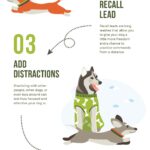What Does It Mean When Dog Puts Paw On You
Dogs are known for their loyalty and affection towards humans, and they often communicate with us in different ways. One of the most common behaviors that dogs exhibit is putting their paw on their owner or other humans. While this behavior may seem cute and adorable, it can have different meanings depending on the context.
In this article, we will discuss what it means when a dog puts its paw on you. We will explore the various reasons behind this behavior and how you can interpret your dog’s actions to better understand their needs and emotions.
Understanding Your Dog’s Body Language
Before we dive into the specifics of pawing, it is essential to understand your dog’s body language. Dogs use a variety of visual cues to communicate their emotions and intentions, including facial expressions, tail wagging, and ear positioning. By understanding these signals, you can better interpret your dog’s behavior and respond appropriately.
When a dog puts its paw on you, it is one such cue that you need to pay attention to. Depending on the situation and your dog’s personality, it can have various meanings.
Possible Reasons Why Your Dog Puts Its Paw On You
1. Seeking Attention: One of the most common reasons why dogs put their paw on you is that they are seeking attention. They might be feeling lonely or bored and want to interact with you. In such cases, they might paw at your leg or arm as a way of saying “Hey! I’m here; pay attention to me!”
2. Showing Affection: Dogs are pack animals who thrive on social interaction with humans and other dogs. When they put their paw on you, it could be a sign of affection or an attempt to bond with you.
3. Asking for Food: Another reason why your dog might put its paw on you is that they are hungry or want food. If your dog has learned that putting its paw on you results in treats or food rewards, they might repeat the behavior to get what they want.
4. Seeking Comfort: Dogs are highly empathetic creatures and can sense when their owners are feeling down or upset. In such cases, they might put their paw on you as a way of offering comfort and support.
5. Indicating Pain or Discomfort: Sometimes, dogs may put their paw on you if they are experiencing pain or discomfort in a particular area. For example, if your dog has an injury on its paw, it might try to draw your attention to it by pawing at you.
Interpreting Your Dog’s Actions
Now that we have discussed the possible reasons behind why dogs put their paw on you let us look at how you can interpret this behavior to better understand your dog’s needs and emotions.
1. Look at the Context: The context in which your dog puts its paw on you is crucial in interpreting its behavior. If they do it while you are playing with them, it could be a sign of affection or seeking attention. On the other hand, if they do it while you are eating, it could be an indication that they are hungry.
2. Observe Your Dog’s Body Language: Along with pawing, your dog’s body language can give you valuable insights into their intentions and emotions. For example, if your dog is wagging its tail while putting its paw on you, it is likely a sign of affection or playfulness.
3. Consider Your Dog’s Personality: Every dog has a unique personality, and their behavior should be interpreted accordingly. Some dogs may be more vocal in expressing their emotions, while others might rely more on non-verbal cues like pawing.
How to Respond When Your Dog Puts Its Paw On You
So now that you know why dogs put their paw on you let us look at how to respond when your furry friend does so.
1. Give Them Attention: If your dog is pawing you to seek attention, the best way to respond is by giving them what they want. Pet them, play with them, or take them for a walk, depending on their needs and preferences.
2. Check for Injuries: If your dog’s pawing behavior seems unusual or persistent, it may be an indication that they are experiencing pain or discomfort. Check their body for any visible injuries or consult a vet if necessary.
3. Teach Them Appropriate Behavior: If your dog’s pawing is becoming a nuisance or causing problems, you can train them to stop doing so. Use positive reinforcement techniques like treats and praise to teach them appropriate behavior.
Conclusion
In conclusion, dogs put their paw on you for various reasons ranging from seeking attention to showing affection and asking for food. By understanding your dog’s body language and interpreting their behavior correctly, you can better respond to their needs and emotions. Remember always to show your furry friend love and affection as they are one of the most loyal companions anyone could ask for!



